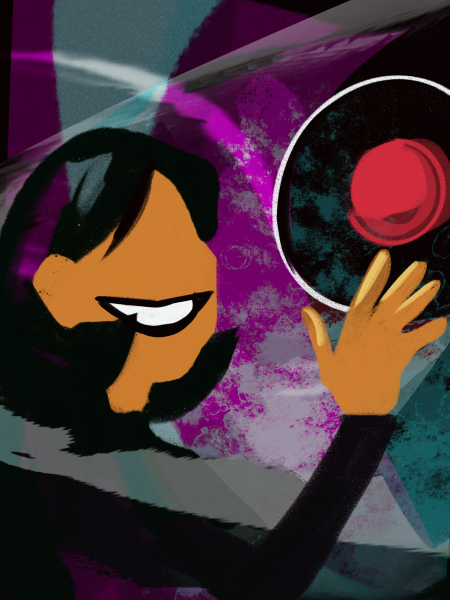Borders of your world
How a 2007 game discussed the social division of modern society and spread of the information
You wake up confused, dazed, lying on the ground in one of the busiest shopping districts in the world. People pass by as if you were nothing but a speck of dust, someone not a part of their active world. High school girls excited to spend the day with friends, a businessman looking at his watch trying to get to a meeting on time, and a couple going out to have some fun all fade into the sprawl of people all around you.
Standing up you look around then notice the weight of a mysterious pin in your hand. As your hand brushes over the top of them and the thoughts of hundreds of people flood your mind as pedestrians right through you. Your mind races with questions, but is interrupted by a mysterious text on your flip phone. It tells you to complete a task in an hour or be erased. As you finish reading it, a timer appears on your hand.
That is the opening minute of 2007 cult classic DS game “The World Ends With You”, also known as TWEWY. In the 13 years it has been released, it has received two re-releases, one on phones and the other on the Nintendo Switch, animated television series that just started airing, and a sequel that is coming out July 27.
The reason for its status as a must play game, and many Youtube videos argue it is a masterpiece, is due to the increasingly important themes of the game’s story and gameplay that reinforces its themes about social bubbles, the value of art, and meme theory.
Expand Your World.
To say Neku, the game’s main protagonist, was an unlikable character in the beginning is an understatement. In the opening hour, the game’s entire purpose is to show how toxic and potentially deadly his self centered worldview is. Many players became disgusted with Neku because of some of his actions, which include not listening to the people more knowledgable than him, refusing to help others, and attempted murder. Some stopped playing the game thinking him unredeemable.
Neku’s character was written with the idea of a teen refusing to try to understand the people around him, he isolates himself believing it is impossible to understand people that are not him due to differing values. This may sound like your typical edgy anime protagonist, which it is, but the game does a full deconstruction of this character and how it relates to real life.
Looking around schools and online groups, you see people staying in their own social groups. Multiple times in the game, Neku and later friend, Joshua, went on mini rants about why talking to people outside your understanding is “pointless”, saying it is impossible to truly understand them.
“[…] I think because teenagers, it’s kind of an awkward age, and you want to identify with a group so that you feel like you’re as much as possible, similar to them,” teacher Babette Grunwald said. “And what’s kind of too bad is really, it’s kind of fun to get to know the people who are maybe not as much like you to be too.”
People like it when their ideas are reaffirmed and when their beliefs become threatened they go on the defensive. Cognitive scientists Hugo Mercier and Dan Sperber worked to explain what causes this in their book “The Enigma of Reason” and another famous example exploring this is Plato’s cave.
This is called the filter bubble which has been shown to make the spread of fake news far worse than it has ever been. This phenomenon has no sure way to fight it, other than exposing yourself to ideas you normally would look at.
Neku’s overarching story is about him being forced to work with people he would automatically hate and not interact with. He is forced to leave his “bubble” and becomes a better, more understanding person. By expanding his understanding of the people around him, he expanded his world in his own eyes.
So… What’s a “meme”?
TWEWY explores memes, an idea spread through imitation, in two ways, each presenting a different idea relating to the spread of “memes.” The first one is a gameplay mechanic called imprinting. When the player hears keywords and repeated phrases, they can imprint them on a person to help influence what they do.
This gameplay mechanic can be “seen” in real life with the whole idea of viral challenges. A person sees something online. They want to do it to help fit in and be part of the cool crowd, thus causing a cycle of imitation and spreading the idea.
“You get some people who are very influential, they do something, and everyone is like ‘ah, that is the next big thing so we are going to imitate that,'” said junior Leo Raveling.
The other method is through art. While this is lightly touched on in the main story, the unlockable story explanations goes in depth to explain how art spreads ideas.
In a story, when an artist or anyone working in the creative field makes something it often has a deeper message, an idea that the person wants to communicate. That idea becomes a crucial part of the creation and when people see it they may see the idea being presented.
“I think art has always been a reflection of what is going on in a society at the time, and what people are worried about, or have issues about,” Grunwald said. “And so at any time in history, the art of that time was important to show to reflect on what’s going on.”
Be in any history class and you may be asked to look at a historical piece, and explain how it relates to what was occurring then. Those ideas are deeply woven into the very fabric of the creation. That is a large part of the reason art and historical pieces can be considered “memes”. The ideas presented in them still impact the world today and modern beliefs.
It begins with you.
TWEWY presents an idea that the developers thought was important, that seeking to understand those around you may be hard but is vital for a healthy society and understanding how information is spread can impact how people think. The whole story served as a warning and while being very old, with the rise of social media, it has become an important idea.
Your donation will support the student journalists of West Albany High School. Your contribution will allow us to purchase equipment and cover our annual website hosting costs.








